
Russian Journal of Pacific Geology
Scope & Guideline
Exploring the Depths of Pacific Geology
Introduction
Aims and Scopes
- Geological and Geophysical Studies:
The journal publishes research that employs various geological and geophysical methods to analyze the structure and composition of the Earth's crust and lithosphere, especially in the Pacific region. - Mineralization and Resource Evaluation:
A significant focus is on the study of mineral deposits, including gold, copper, and rare metals, with an emphasis on their geological settings, formation conditions, and potential for resource exploitation. - Volcanology and Seismology:
Research related to volcanic activity, eruption dynamics, and seismic events is a core area, reflecting the geological complexity and tectonic activity of the Pacific Ring of Fire. - Environmental and Geochemical Research:
The journal also addresses environmental geology, including studies on contamination, sediment analysis, and the geochemical properties of natural waters, highlighting the interaction between geological processes and environmental conditions. - Paleogeography and Stratigraphy:
Papers often explore sedimentary records and geological history, providing insights into past environments and the evolution of geological formations over time.
Trending and Emerging
- Geochemistry and Isotope Studies:
There is a rising trend in the application of geochemistry and isotope analysis to understand mineralization processes and age dating, which enhances the understanding of geological histories and resource potential. - Tectonics and Structural Geology:
Research exploring tectonic processes and structural geology, particularly in relation to the Pacific tectonic belt and subduction zones, has gained momentum, highlighting the journal's focus on understanding regional geological dynamics. - Climate Change and Environmental Geology:
An emerging theme is the study of geological responses to climate change, including sedimentological and geochemical assessments of past environments, which is increasingly relevant in the context of global environmental changes. - Advanced Geophysical Techniques:
The journal is seeing more publications that utilize advanced geophysical methods, such as magnetotelluric studies and seismic imaging, to investigate subsurface structures and geological processes, reflecting technological advancements in the field.
Declining or Waning
- Paleontology and Biostratigraphy:
There has been a noticeable decrease in publications specifically focusing on paleontological studies and biostratigraphy, suggesting a waning interest in these areas compared to more pressing geological and resource-related topics. - Geological Hazards and Risk Assessment:
Research related to geological hazards, while still relevant, appears to be less frequent, indicating a potential shift in focus towards resource evaluation and mineralization studies. - Geological Mapping and Classical Field Studies:
Traditional geological mapping and field studies seem to be declining, possibly due to the increasing reliance on advanced technologies and modeling techniques in geological research.
Similar Journals
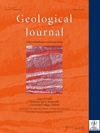
GEOLOGICAL JOURNAL
Exploring the Earth's mysteries since 1951.GEOLOGICAL JOURNAL, an esteemed publication by WILEY, has been at the forefront of geological research since its inception in 1951. With an ISSN of 0072-1050 and E-ISSN of 1099-1034, this journal serves as a vital platform for disseminating high-quality, peer-reviewed research in the field of geology. Operating out of the United Kingdom, the journal proudly features a Scopus rank of 80 out of 321 in the Earth and Planetary Sciences category, reflecting its commitment to scholarly excellence, with a 2023 category quartile ranking of Q2. As part of its innovative approach, GEOLOGICAL JOURNAL seeks to foster interdisciplinary collaborations, advancing our understanding of earth processes, materials, and history. Although it does not offer open access options, its robust subscription model ensures that both professionals and students have access to groundbreaking insights. With a publication history that spans over seven decades, the GEOLOGICAL JOURNAL continues to be an indispensable resource for the global geological community, encouraging discoveries that shape our comprehension of the planet.

GEOLOGICA CARPATHICA
Advancing Knowledge in Geology and BeyondGEOLOGICA CARPATHICA, with ISSN 1335-0552 and E-ISSN 1336-8052, is a distinguished open access journal published by the Slovak Academy of Sciences Geological Institute, serving as a pivotal platform for the dissemination of research in the field of Geology. Established in 1991 and continuing through 2024, the journal is recognized for its significant contributions to Earth and Planetary Sciences, evidenced by its 2023 Scopus ranking placing it in the second quartile (Q2) within Geology. With an H-index that showcases its impactful publications, GEOLOGICA CARPATHICA is committed to fostering scholarly communication while promoting accessible research, having adopted an open access model since 2009. Located in beautiful Bratislava, Slovakia, this journal aims to engage a global audience of researchers, professionals, and students interested in ecological, geological, and environmental studies, making it a prominent resource for enriching the scientific community's understanding of the Carpathian region and beyond.

Solid Earth Sciences
Transforming knowledge into action for Earth's future.Solid Earth Sciences is a dynamic open-access journal published by Elsevier, dedicated to advancing our understanding of the Earth's subsurface processes and materials. Since its inception in 2016, the journal has established itself as a vital resource for researchers and professionals in the fields of geochemistry, petrology, geology, geophysics, and geotechnical engineering, achieving a notable Q2 ranking in multiple categories as of 2023. With an ISSN of 2451-912X, the journal aims to disseminate high-quality research that enhances knowledge of earth surface processes and the intricate interactions within our planet's systems. The journal is indexed in Scopus, showcasing an impressive rank in various sub-disciplines, with a rank of #96 in Geology and a noteworthy percentile in Earth and Planetary Sciences. Solid Earth Sciences offers a platform for innovative studies, comprehensive methodologies, and cutting-edge technological advancements that cater to a global audience of scientists, academics, and students. With its commitment to open access, it fosters wider dissemination and impact of research outcomes, ensuring that pivotal discoveries reach stakeholders and contribute to real-world applications.
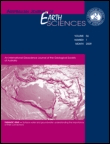
AUSTRALIAN JOURNAL OF EARTH SCIENCES
Connecting Scholars through Earth Science DiscoveryAustralian Journal of Earth Sciences, published by Taylor & Francis Ltd, has established itself as a leading journal in the field of Earth and Planetary Sciences since its inception in 1984. With an impactful reach reflected in its ranking as Q2 in the Earth and Planetary Sciences category, the journal contributes significantly to the advancement of knowledge through rigorous peer-reviewed research. While it is not Open Access, the journal ensures broad accessibility through institutional subscriptions and various academic platforms. With a commitment to covering diverse topics within the Earth sciences, including geosciences, geology, and environmental studies, the Australian Journal of Earth Sciences is an essential resource for researchers, professionals, and students seeking to deepen their understanding of the dynamic processes that shape our planet. Engaging with the journal means being part of a vibrant community that aspires to push the boundaries of scientific inquiry and innovation in Earth sciences.

Andean Geology
Fostering Global Collaboration in GeologyAndean Geology is a prominent open-access journal, published by the SERVICIO NACIONAL GEOLOGIA MINERVA in Chile, dedicated to advancing the fields of geology, geochemistry, petrology, paleontology, and stratigraphy. Since its inception in 2009, the journal has provided a vital platform for the dissemination of research pertaining to the Andean region and beyond, featuring high-quality articles that contribute to our understanding of earth sciences. With an impressive ranking in the Q2 and Q3 quartiles across multiple categories, it reflects a growing impact in the geological community, evidenced by its status within Scopus rankings. Andean Geology not only supports the academic pursuit of knowledge with its open-access policy but also aims to foster collaboration among researchers and professionals worldwide, ensuring wide accessibility of groundbreaking research and promoting academic engagement. By covering a diverse array of topics relevant to the dynamic field of geology, this journal serves as an essential resource for students, professionals, and scholars dedicated to earth and planetary sciences.
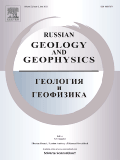
Russian Geology and Geophysics
Connecting Knowledge and Innovation in Earth SciencesRussian Geology and Geophysics is a seminal journal published by GEOSCIENCEWORLD that plays a pivotal role in the dissemination of vital research within the realms of Earth-Surface Processes, Geology, and Geophysics. With an ISSN of 1068-7971 and an E-ISSN of 1878-030X, this journal has witnessed a continuous evolution since its convergence in 2007 and is poised to thrive through 2024. While it is not an Open Access journal, it is recognized for its significant contributions to the academic community, holding a respectable Q2 ranking in Earth-Surface Processes and Q3 rankings in both Geology and Geophysics as of 2023. The journal’s impact factors align it within competitive quartiles, marking it as an essential resource for researchers and professionals seeking to stay at the forefront of geological and geophysical sciences. By publishing high-quality peer-reviewed articles, the journal fosters an environment of knowledge sharing and innovation, making it indispensable for students, practitioners, and scholars alike who are dedicated to advancing our understanding of Earth's complex systems.
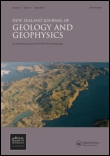
NEW ZEALAND JOURNAL OF GEOLOGY AND GEOPHYSICS
Illuminating the Complexities of Our Planet's Processes.NEW ZEALAND JOURNAL OF GEOLOGY AND GEOPHYSICS, published by Taylor & Francis Ltd, stands as a prominent forum dedicated to the interdisciplinary exploration of geological and geophysical phenomena. With an impact factor that situates this journal in the prestigious Q1 category across key subjects—namely Earth and Planetary Sciences, Geology, and Geophysics—it is a critical resource for researchers, professionals, and students alike. The journal has been operational since 1958 and continues to contribute valuable insights into the complexities of the Earth's processes. Although it does not currently offer Open Access options, its broad readership benefits from an extensive archive of high-quality research findings that span from 1958 to 2024. Located in the United Kingdom, the journal remains a pivotal player in advancing the understanding of Earth's systems, making significant contributions to both academic inquiry and practical applications in the field.

ACTA PETROLOGICA SINICA
Exploring the Depths of Geochemistry and PetrologyACTA PETROLOGICA SINICA, published by SCIENCE PRESS, is a distinguished journal in the field of geochemistry and petrology, known for its commitment to advancing the understanding of Earth's materials and processes. With an impact factor ranking it in the second quartile (Q2) of its category and a respectable Scopus rank of 64 out of 154, this journal serves as a vital platform for researchers, professionals, and students alike, facilitating the dissemination of innovative studies and findings from 1980 to the present. Its robust editorial board and diverse array of articles make it an invaluable resource for those engaged in the intricate analysis of petrological phenomena and geochemical transformations. Published in China, ACTA PETROLOGICA SINICA provides access to significant original research, reviews, and insights essential for advancing knowledge and fostering collaboration in the earth sciences.

Swiss Journal of Geosciences
Connecting Researchers to the Heart of Earth ScienceSwiss Journal of Geosciences is a prestigious academic journal dedicated to advancing the field of geosciences, published by SPRINGER INTERNATIONAL PUBLISHING AG. Since its inception in 2007, the journal has established itself as a leading platform for disseminating high-quality research findings in various domains related to Earth and planetary sciences, achieving a notable Q1 ranking in Geology as of 2023. With a solid reputation reflected in its Scopus ranking of Rank #72/321, the journal stands in the 77th percentile within its category. Based in Switzerland, the Swiss Journal of Geosciences embraces an open access model, making it easier for researchers, professionals, and students worldwide to access vital geological research without barriers. The journal’s objectives include promoting interdisciplinary research and fostering insights that address both fundamental and applied geoscientific problems, ensuring it remains a crucial resource for those seeking to understand our planet’s dynamics. Engage with pioneering research and contribute to the vibrant community of geoscientists by exploring the impactful articles published within its pages.
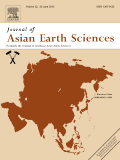
JOURNAL OF ASIAN EARTH SCIENCES
Charting New Frontiers in Asian Earth ResearchJOURNAL OF ASIAN EARTH SCIENCES, published by Pergamon-Elsevier Science Ltd, is a premier international journal dedicated to advancing the understanding of Earth Sciences, particularly within the vibrant and diverse geological landscapes of Asia. With an esteemed Impact Factor reflective of its robust scholarship, the journal is currently categorized in the Q1 quartile for both Earth-Surface Processes and Geology, highlighting its significant contribution to these fields. Researchers can access cutting-edge research spanning geophysical studies, geological formations, and environmental changes via the journal’s Open Access model, ensuring a broad dissemination of knowledge. As the journal converges its focus from 1997 to 2024, it continues to serve as a critical platform for scholars, professionals, and students aiming to explore the unique challenges and opportunities present in Asian Earth sciences. Its commendable rankings of 28th out of 179 in Earth-Surface Processes and 52nd out of 321 in Geology, demonstrate its influence and relevance in the academic community.